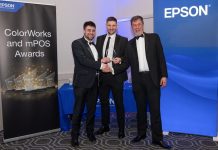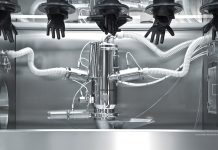There was a time in the 1950s when hydrogen was associated with threatening the planet in the form of the hugely powerful H-Bomb. The connotations were as negative as you can get.
Today, though, it has undergone as big a U-turn as you can imagine because, as the world wrestles with the issues presented by climate change, hydrogen has emerged as one of the great hopes for the future.
Amid talk of biofuels, solar, wind and tide power, many experts keep coming back time and time again to hydrogen as a source of green energy.
The advantage is that not only is hydrogen all around us but it is already used in industry, not least in the chemical sector where it is a central part of many processes.
The attraction for many chemical companies is that because hydrogen can be used to generate power that means that new markets are opening up for the product.
Among companies committed to hydrogen is the Toshiba Corporation, which recently announced the opening of the Toshiba Group Hydrogen Energy Research & Development Center at its Fuchu Complex in western Tokyo to further the technology.
Toshiba aims to increase the sales of hydrogen-related business to 100 billion yen by 2020 by developing an energy supply system that uses renewable energy to power hydrogen-generating water electrolysis systems then uses fuel cells to convert that hydrogen to electricity.
The company says that the system will be deployed in locations where electricity generation and transmission costs are high, such as isolated islands and other remote places where it can help cut costs and achieve a stable electricity supply.
In support of the work, Toshiba has this year run demonstrations in Kawasaki City, Japan, of H2One, an energy supply system based on renewable energy and hydrogen.
One problem for motor manufacturers espousing hydrogen technology is finding enough refuelling stations for the new vehicles.
Work is now well under way to resolve the problem, a solution that is crucial before hydrogen-powered cars can really become popular.
An example of the work being done came when a £31 million deal was struck to make hydrogen vehicles a viable and environmentally-friendly choice for motorists across Europe.
Leading motor manufacturers, hydrogen fuel suppliers, the Mayor of London’s Office and energy consultancies from around the globe signed up to the HyFive project, the largest of its kind in Europe.
Hydrogen infrastructure will be built across several countries as part of the project. Filling stations will be built and operated in Denmark, Sweden, Germany, Austria and Italy, as well as in London.
The Mayor of London’s Office is coordinating the project, whose signatories include car firms BMW, Daimler, Honda, Hyundai, Toyota and hydrogen fuel companies including Air Products, Copenhagen Hydrogen Network, ITM Power, Linde and OMV. Other signatories include Element Energy, PE INTERNATIONAL, the Institute for Innovative Technology and the European Fuel Cell and Hydrogen Joint Undertaking.
Mayor of London Boris Johnson said: “To sell this technology we need to show Londoners and the wider world that it is not science fiction.
“By building the vehicles and the filling stations and allowing people to kick the tyres we will be able to demonstrate that hydrogen is a viable option and that London is at the forefront of efforts to make it so.”
A similar initiative is under way in California where Honda is supporting the growth of the state’s hydrogen network.
The new Honda FCV Concept was unveiled in Japan in November 2014, pointing the way to an all-new Honda fuel cell car planned to launch in the US and Japan in 2016 and later in Europe.
Honda’s next-generation fuel cell vehicle will feature a fuel cell powertrain packaged completely in the engine room of the vehicle. The next-generation Honda FCV is anticipated to have a driving range of more than 300 miles and the company says that a comprehensive network of hydrogen refueling stations is crucial to serve its customers.
To that end, the company is seeking to expand California’s public hydrogen refueling station network by providing $13.8 million to FirstElement Fuel to build additional refueling stations around the state, supported by state grants.
Among other recent initiatives, 2050 Motors, Inc this summer announced that it has signed an agreement to introduce hydrogen-rich alcohol fuel (HRAS) technology to the US Automobile Industry.
The technology, which was developed in China and has been incorporated into taxi fleets in China, uses a proprietary catalyst and a patented conversion system that allows vehicles to run on 70 per cent methanol (or ethanol) and 30 per cent water. Methanol burns cleaner than gasoline and diesel, and reduces car emissions significantly.
Research shows that the vehicles experience the same mileage on the methanol/water fuel mixture as gasoline powered vehicles, the efficiency being provided by the conversion of part of the alcohol/water fuel to hydrogen generated by the catalyst and waste heat from the exhaust system.
Michael Hu, President of 2050 Motors, Inc. said: “We are in the initial stages of a paradigm shift to clean, inexpensive, abundant fuel and clean-fuelled, highly efficient engines for automobiles, trucks and especially fleets that refuel at central locations such as taxi cabs.”
Scientists have taken a major step forward in the production of hydrogen from water, which they say could lead to a new era of cheap, clean and renewable energy.
Chemists from the University of Glasgow have come up with a new form of hydrogen production which is 30 times faster than the current method.
Hydrogen is easily produced from water by electrolysis, a process which uses electricity to break the bonds between water’s constituent elements, hydrogen and oxygen, and releases them as gas.
Currently, industrial production of hydrogen relies overwhelmingly on fossil fuels to power the electrolysis process. The most advanced method of generating hydrogen using renewable power uses a method known as proton exchange membrane electrolysers (PEMEs).
To reach optimum efficiency, PEMEs require precious metal catalysts to be held in high-pressure containers and subjected to high densities of electric current, which can be difficult to reliably achieve from fluctuating renewable sources.
The new method allows larger quantities of hydrogen to be produced at atmospheric pressure using lower power loads, typical of those generated by renewable power sources, say the team.
The research team was led by Professor Lee Cronin of the University of Glasgow’s School of Chemistry.
Professor Cronin said: “The process uses a liquid that allows the hydrogen to be locked up in a liquid-based inorganic fuel. By using a liquid sponge known as a redox mediator that can soak up electrons and acid, we’ve been able to create a system where hydrogen can be produced in a separate chamber without any additional energy input after the electrolysis of water takes place.
“The link between the rate of water oxidation and hydrogen production has been overcome, allowing hydrogen to be released from the water 30 times faster than the leading PEME process on a per-milligram-of-catalyst basis.”
The research was produced as part of the University of Glasgow Solar Fuels Group, which is working to create artificial photosynthetic systems which produce significant amounts of fuel from solar power.
Professor Cronin said: “About 95% of the world’s hydrogen supply is currently obtained from fossil fuels, a finite resource which we know harms the environment and speeds climate change.
“Some of this hydrogen is used to make ammonia fertiliser and as such, fossil hydrogen helps feed more than half of the world’s population.”
“The potential for reliable hydrogen production from renewable sources is huge. The sun, for example, provides more energy in a single hour of sunlight than the entire world’s population uses in a year.
“If we can tap and store even a fraction of that in the coming years and decrease our reliance on fossil fuels it will be a tremendously important step to slowing climate change.”
The University of Glasgow’s Dr Greig Chisholm, Dr Mark Symes and Benjamin Rausch also contributed to the work.















